“My name is Nnenna. I come from the internet. And I’ve got three things to say. The vision of the World Wide Web is that it be for everyone. The dangers are the we are not secure enough, that we are not connected enough, and that there are not enough women — specifically women, like myself — represented. And, digital citizenship is as important as civil citizenship.”
Nnenna Nwakanma (Chief Web Advocate at WWW Foundation) came to #LEAP22 to represent the vision for the Internet that its inventors imagined: “that humanity will use that tech for good.”
That vision, Nwakanma said, explains why Tim Berners-Lee gave the World Wide Web to the world for free: “it became free so that it could be for everyone.”
The positive power of global connectivity has become crystal clear throughout the pandemic, as populations have been able to keep economies going from home, access vital supplies, and share medical science research to enable the rapid development of COVID-19 treatments and vaccines.
But Nwakanma spoke passionately about the dangers of the Internet, too. And her words serve as a call to action for governments, businesses, and individuals around the world.
What are the dangers of the Internet?
Nwakanma divided the complex challenges of connectivity into three parts:
-
The unconnected. “Half the population of the world is not connected to the Internet, so how can it be for everyone if we are not all connected?”
-
Insecurity online. Data privacy, data theft, and online violence make the Internet a difficult place to be for many people, with risks present for all users (with many of those risks unknown until they’ve actually happened to you).
-
Inequalities. Nwakanma cited gender inequality in tech as one of the biggest dangers, because “we can’t forge forward leaving half the population — the women — behind.”
These dangers aren’t unknown in digital industries, of course. But while some companies and governments are working hard to overcome them, many people (at a government, corporation, and personal level) just don’t know where to start.
Numerous countries now have agencies in place to protect against certain kinds of online danger. Like the Cybersecurity and Infrastructure Security Agency in the US, which safeguards critical infrastructure (by the way, we have another blog post on that); and the European Cyber Security Organisation, a non-profit which has partnered with the European Commission to develop holistic cybersecurity measures. But organisations like this only protect against certain forms of digital danger, and don’t cover inequalities (or at least, not to any meaningful depth).
A general, widespread uncertainty about who is responsible for protecting people on the Internet and ensuring it’s a good thing for everyone means that no one feels empowered to take that responsibility. So they pass it on to the next organisation, or corporation, or individual, with the vague assumption that someone will clean up after them at some point.
Nwakanma, however, is very clear when it comes to responsibility.
Who’s responsible for making it safe?
The short answer: everyone.
Every individual, every industry and business, and every government has a responsibility to mitigate the dangers of the Internet and make it better. Because it is for everyone, so it should also be cared for by everyone.
At an individual level, Nwakanma said: “As a user, it is my duty to get educated. Digital citizenship is as important as civil citizenship.”
A country or corporation that’s providing digital services to its population must also provide education; “because without skilling them to be able to use the services, without skilling them to be responsible citizens online, we have a problem.”
Users, equipped with the skills and knowledge to do so, must take responsibility for their online activity. “It is my duty as a digital citizen to be responsible, not to share fake news, to know how to protect myself…we cannot have a citizenship that always complains. It’s my duty to contribute.”
It’s a really interesting point, because in a world where digital experiences have become mainly mediated through commerce, digital users see themselves as consumers — and as consumers, they always have the right to complain. It brings up the question of whether it’s even possible for Internet users to see themselves as contributors, and make meaningful contributions to the improvement of the Internet, when most of the time they spend online involves some form of commercial consumption or advertising.
Indeed, the word ‘user’ and ‘consumer’ are now used interchangeably to refer to people on the Internet, with good reason — of the five billion internet users worldwide, data from Statista shows that 4.65 billion are social media users (as of April 2022). And social media use is now inextricable from advertising consumption.
And the onus of that — of transforming the World Wide Web from a commerce space, and taking it back to a space that’s designed for the good of humanity — lies (largely) with the people who are developing and selling the tech.
“There’s a group of people we don’t often see at conferences,” Nwakanma noted, “the designers. And these are the people I want to challenge today. That you design in an ethical manner. That you design for humanity. That you design not just for the good people here, but the people who are in the villages, the people who are in rural areas. You need to design for humanity and not just design for the market.”
Governments must commit to connecting everyone to digital services, and to building trust among citizens so that they’re willing to make their personal contributions to improving and protecting the Internet. Investors must invest for everyone — not just for the inhabitants of wealthy cities. Tech companies and innovators must innovate beyond the boundaries of the places where they live and work. And all digital citizens must step up to their own responsibilities for sharing information and ideas in a thoughtful manner, for the good of our connected, global community.








